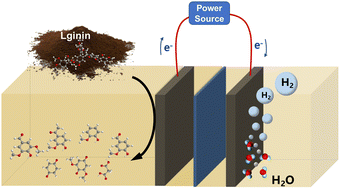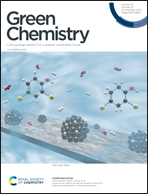Electro-oxidative depolymerization of lignin for production of value-added chemicals
Abstract
Lignin is the most abundant aromatic polymer naturally produced in the world. Conversion of lignin by depolymerization to aromatic monomers has attracted more and more interest in recent years. The electro-oxidative depolymerization of lignin with renewable electricity pertains to be a versatile and sustainable method because it can be performed under relatively mild conditions and it is easy to control the reaction degree. In this work, we have reviewed recent research progress in the electro-oxidative depolymerization of lignin for value-added products, focusing on the catalysts, electrodes, processes, electrocatalytic systems and additives, as well as the challenges faced in potential application of the technologies. It is recommended that more efficient electrocatalysts should be developed with regards to activity, selectivity and stability for direct use in the electro-oxidative depolymerization of lignin. New technology with less pollution and high selectivity should be developed for efficient recovery and purification of target aromatic products from the mixture of various degradation products. Understanding of the mechanisms of lignin depolymerization by electro-oxidation should be deepened, which will guide the design of catalysts and processes for increasing the yield of the desired target product.

- This article is part of the themed collections: Green Chemistry Reviews and 2022 Green Chemistry Hot Articles


 Please wait while we load your content...
Please wait while we load your content...